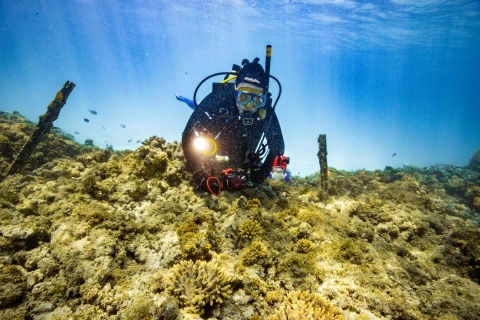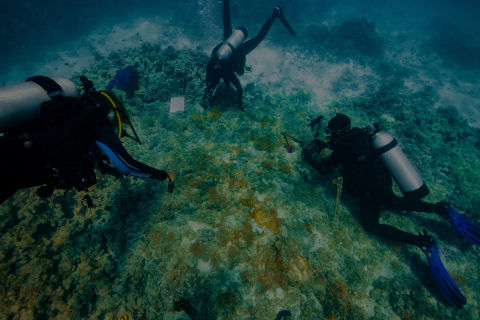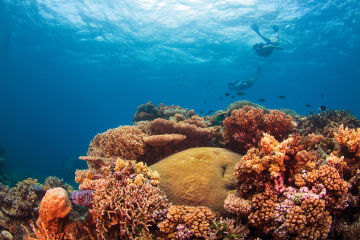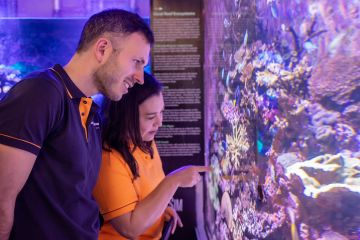Media Release ·
First Coral IVF babies on the Reef thriving

Despite the most wide-spread bleaching event ever recorded, researchers have found more than 60 coral colonies born through the first Great Barrier Reef Foundation Coral IVF trial on the Reef in 2016 are thriving and likely to spawn next year.
Great Barrier Reef Foundation Managing Director Anna Marsden said, “We couldn’t be more excited to see that these coral babies have grown from microscopic larvae to the size of dinner plates, having not only survived a bleaching event but are now on track to start reproducing themselves – helping restore a degraded reef.
“Our Reef is the largest living thing on Earth, with rich corals spanning an area visible from space. But it’s facing a growing combination of threats and we need urgent action on climate change while also finding new ways to save coral reefs and help them adapt,” Ms Marsden said.
“Saving the Reef is a huge task, but knowing this innovative, cutting-edge science works gives us hope.”
Lead Researcher and Southern Cross University Professor Peter Harrison has just returned from a research trip to Heron Island to check on the progress of the 2016 coral babies and to conduct further Coral IVF trials. “I was thrilled to see healthy branching Acropora colonies that are on track to start reproducing themselves in the coral larval restoration sites we settled larvae in four years ago during the first small-scale pilot study.
“In contrast, sadly, the coral communities in the control sites where we didn’t add any larvae have remained the same and virtually no natural recruitment of new corals has happened in those sites,” Professor Harrison said.
“After seeing the potential of this game-changing technique the Great Barrier Reef Foundation and its partners brought Coral IVF to the Reef back in 2016 bringing together people and science to give nature a helping hand.” Ms Marsden said.
“Coral IVF is the first project of its kind to re-establish coral on damaged reefs by collecting millions of coral eggs and sperm during the spawning season, growing them into baby corals and releasing them onto degraded areas of the Reef.”
Now, as part of the world’s largest coral reefs program, the Reef Restoration and Adaptation Program, this technique is being scaled up with the aim to reach kilometre-scale restoration across the Great Barrier Reef in collaboration with Southern Cross University, CSIRO and QUT, and support from Australian Institute of Marine Science.
“Through the trial which we have just completed with our partners we were able to deploy millions of coral babies to degraded reefs off of Heron and One Tree Islands,” Professor Peter Harrison said.
The Reef Restoration and Adaptation Program is funded by the partnership between the Great Barrier Reef Foundation and the Australian Government’s Reef Trust and is delivered by a collaboration between Australian Institute of Marine Science, the Great Barrier Reef Foundation, CSIRO, The University of Queensland, QUT, Southern Cross University and James Cook University.



#Related

Media Release ·
Airbnb announces Community Fund grant for the Reef

Media Release ·


